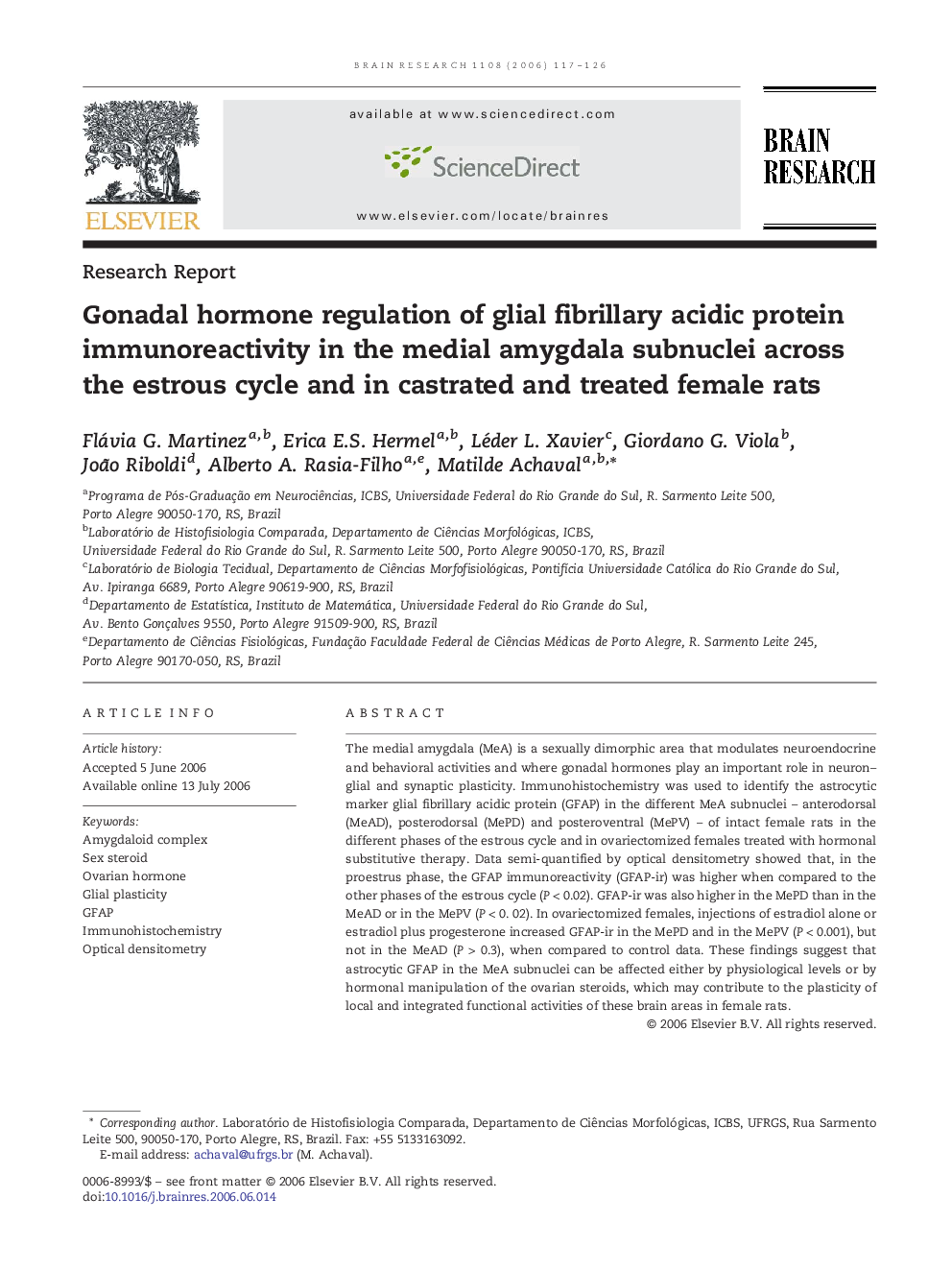| Article ID | Journal | Published Year | Pages | File Type |
|---|---|---|---|---|
| 4332357 | Brain Research | 2006 | 10 Pages |
The medial amygdala (MeA) is a sexually dimorphic area that modulates neuroendocrine and behavioral activities and where gonadal hormones play an important role in neuron–glial and synaptic plasticity. Immunohistochemistry was used to identify the astrocytic marker glial fibrillary acidic protein (GFAP) in the different MeA subnuclei – anterodorsal (MeAD), posterodorsal (MePD) and posteroventral (MePV) – of intact female rats in the different phases of the estrous cycle and in ovariectomized females treated with hormonal substitutive therapy. Data semi-quantified by optical densitometry showed that, in the proestrus phase, the GFAP immunoreactivity (GFAP-ir) was higher when compared to the other phases of the estrous cycle (P < 0.02). GFAP-ir was also higher in the MePD than in the MeAD or in the MePV (P < 0. 02). In ovariectomized females, injections of estradiol alone or estradiol plus progesterone increased GFAP-ir in the MePD and in the MePV (P < 0.001), but not in the MeAD (P > 0.3), when compared to control data. These findings suggest that astrocytic GFAP in the MeA subnuclei can be affected either by physiological levels or by hormonal manipulation of the ovarian steroids, which may contribute to the plasticity of local and integrated functional activities of these brain areas in female rats.
